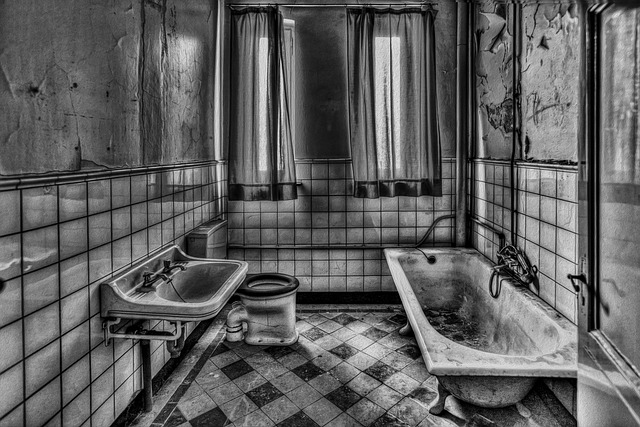In today's digital era, understanding water consumption patterns is key to efficient resource management. Heated smart mirrors, equipped with advanced digital monitoring, offer real-time insights into water usage, enabling users to make informed decisions and reduce wastage. By tracking peak times, leaks, and seasonal variations, these devices promote sustainable practices, optimize resource utilization, and contribute to global conservation efforts, all while integrating seamlessly into daily life.
In today’s digital era, embracing innovative solutions for water conservation is paramount. This article explores the transformative power of a digital water monitoring system in tracking and managing water usage. From understanding consumption patterns to integrating heated smart mirrors, we delve into cutting-edge technologies driving sustainability. Discover key features and benefits that enhance user experiences while ensuring long-term environmental stewardship. Moreover, we discuss implementation strategies and future prospects, highlighting how technology can shape a greener tomorrow.
Understanding Water Consumption Patterns: Unveiling the Importance of Tracking
Understanding water consumption patterns is crucial in today’s world, where efficient resource management is a top priority. By implementing a digital water monitoring system, we can gain valuable insights into our water usage habits and identify areas for improvement. This data-driven approach allows us to make informed decisions about conservation efforts, especially when considering innovative technologies like heated smart mirrors that require precise water control.
Tracking water consumption patterns reveals the unseen, from subtle leaks that go unnoticed to peak usage times during the day or seasonal variations. These insights enable proactive measures to reduce wastage and optimize resource utilization. With digital monitoring, folks can foster a culture of sustainability, ensuring their efforts are not just effective but also efficient, particularly in navigating the labyrinthine water infrastructure within their homes or establishments.
The Role of Digital Monitoring: A Modern Approach to Water Conservation
In today’s digital era, the role of technology in water conservation is becoming increasingly prominent. Heated smart mirrors, for instance, are not just a futuristic convenience; they represent a game-changing tool in efficient water management. These advanced devices incorporate digital monitoring systems that track and analyze water usage patterns, providing real-time data and insights to users. By integrating such tech into daily routines, folks can foster a culture of responsible water consumption.
The implementation of digital water monitoring systems is a strategic move towards revolutionizing how we interact with our most precious resource. Unlike traditional methods, these smart solutions enable precise navigation through the labyrinthine complexities of water usage data. From identifying tiny leaks that could go unnoticed otherwise to understanding individual or household consumption trends, digital monitoring empowers users to make informed decisions. This, in turn, leads to significant enhancements in water conservation efforts, ensuring a sustainable future for all.
Integrating Heated Smart Mirrors: A Unique Solution for Efficient Water Usage
Incorporating heated smart mirrors offers a cutting-edge solution for optimizing water usage in both residential and commercial settings. These advanced technological devices serve as more than just reflective surfaces; they’re equipped with sensors and AI capabilities that enable real-time monitoring of water consumption patterns. By integrating them into existing plumbing systems, users can gain valuable insights into their water usage habits, identifying areas where wastage occurs most frequently.
Heated smart mirrors also play a pivotal role in promoting efficient water stewardship. They can be programmed to provide personalized recommendations for reducing water consumption, such as optimizing shower times or detecting leaks within the plumbing infrastructure. This proactive approach not only helps conserve precious resources but also contributes to significant cost savings on water bills. Moreover, their sleek and modern design makes them an aesthetically pleasing addition to any space, seamlessly blending technology with contemporary interior trends.
Key Features and Benefits: Enhancing User Experience and Sustainability
Incorporating a digital water monitoring system into your space offers more than just efficient water management; it transforms the way users interact with their environment, enhancing both convenience and sustainability. Heated smart mirrors, for instance, are not just luxuries but integral parts of this digital revolution. Equipped with real-time water usage data, these mirrors can notify users of excessive consumption patterns, encouraging mindful water use.
This technology empowers individuals to make informed decisions, such as installing more efficient fixtures or adjusting usage habits. The result is a reduced environmental footprint and significant cost savings on water bills. Moreover, the seamless integration of heated smart mirrors into daily routines promotes a sense of eco-consciousness, contributing to global sustainability efforts.
Implementation and Future Prospects: Embracing Technology for a Greener Tomorrow
The implementation of a digital water monitoring system is a significant step towards a more sustainable future. By embracing technology, we can gain real-time insights into our water usage, allowing for efficient management and conservation. This advanced system enables users to track their daily consumption, identify areas of excessive use, and make informed decisions to reduce waste. With the integration of heated smart mirrors, for instance, individuals can not only enjoy the convenience of a modern amenity but also contribute to water conservation efforts by adopting more mindful practices.
Looking ahead, the future prospects of such digital monitoring solutions are promising. As technology continues to evolve, we can anticipate even smarter and more integrated systems that seamlessly blend into our daily lives. Imagine homes equipped with intelligent plumbing systems that automatically adjust water usage based on occupancy and personalized preferences, further reducing wastage. Additionally, data analytics can play a pivotal role in predicting and preventing potential water crises, ensuring a greener tomorrow for both urban and rural communities alike.
The integration of digital water monitoring systems, coupled with innovative solutions like heated smart mirrors, signifies a significant step towards sustainable water management. By understanding and tracking water consumption patterns, we can identify areas for improvement and embrace technology to create a greener tomorrow. Heated smart mirrors not only enhance user experiences but also contribute to efficient water usage, making them a promising addition to any modern, eco-conscious space. As we look ahead, the potential of these technologies in shaping a more sustainable future is undeniable.
